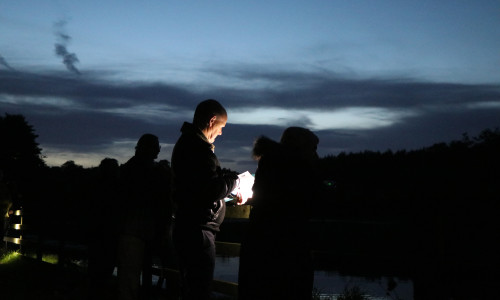Category: Science
Published on: March 6th, 2020
Do bats go to the zoo?
When you go to a zoo or safari park, it’s easy to focus on the beautiful exotic animals around you and forget about the native species that also call it home. Here at Knowsley Safari we’re proud to support all the animals that live here, from the insects below your feet, to the native birds flying overhead.
One of the key groups of native species that we work to protect are bats! You may not see them, especially during your daytime visits, but we’re always working hard to monitor their populations.
There are 18 different species of bats in the UK alone, and all of these are protected. It’s so important that conservationists are doing their bit to protect these fascinating creatures from further national decline by monitoring their presence, population size and behaviour. Our Research and Conservation team have spent the last three years investigating our resident bat populations across the 1500-acre estate. This involves investigating different habitats, lots of late night bat watching and plenty of data to sort!
Listening to Bat Chat
Different bats call out at different frequencies, but we can’t hear them with our human ears. To help us monitor the bats that live here on the safari we use bat detecting devices. These allow us to listen and sometimes even see a visualisation of the different sounds bats are making in waveform. We use this data to locate the bats, tell one species from another and even know whether they are feeding or mating!
Over 7000 calls have been recorded here on safari! All this data we’ve been collecting over the last three years helps us find the most popular habitats for the bats and where the native populations are living. Nearly three quarters of all the calls were recorded at habitats near water, including the Mizzy Lake near our Wolf Country. The second most popular habitat was forests and woodland, like our Amur Tiger Trail!
Because our safari is such an important home for many native species, when we create new habitats for our exotic animals we need to be considerate of the impact it will have on these populations. When our Amur Tiger Trail, a new 10,000m2 forested tiger facility opened in May 2018 we carried on monitoring bat calls and collecting data from the area. The Tiger Trail was created around an already thriving woodland, meaning the natural habitat could continue to thrive without too much disruption. When the data had been recorded we were excited to see that there was no difference in bat numbers from before and after the Amur Tiger Trail construction! This is fantastic news and we’ll continue to monitor and protect native species across the park.
Find out more about the conservation and research projects we're part of both here on safari and across the world.


